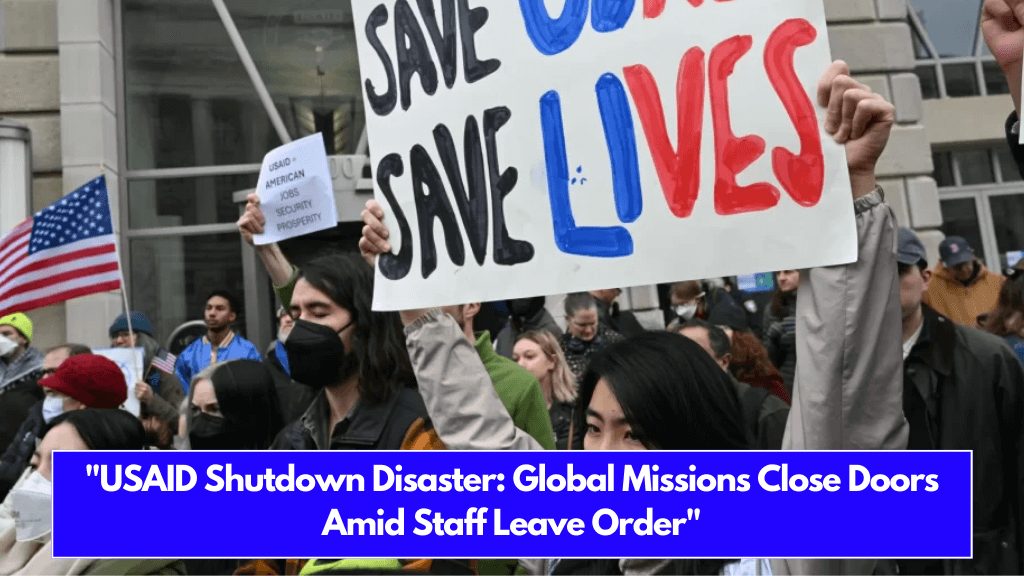The U.S. Agency for International Development (USAID) has announced a major change affecting its global operations. Nearly all USAID staff will be placed on leave by Friday night, with overseas missions shutting down and employees returning to the U.S. This sudden decision leaves the future of the agency uncertain, raising concerns about global humanitarian programs.
What Is Happening at USAID?
Shutdown and Staff Recalls
USAID informed staff on Tuesday night that all “direct-hire personnel” will be placed on leave, except those working on critical functions or specific programs. These exceptions will be notified by Thursday at 3 p.m. ET. Overseas missions are shutting down, and most staff are being recalled by Friday.
To facilitate this, USAID and the State Department are creating plans to cover travel costs, giving staff 30 days to return. Personal service contractor (PSC) and independent service contractor (ISC) contracts that are deemed unnecessary will be terminated, although case-by-case exceptions may be made.
Administrative Leave for Headquarters Employees
Staff working at USAID’s headquarters in Washington, D.C., have been placed on paid administrative leave. They are required to stay available by phone or email during business hours but cannot enter USAID offices. The agency’s buildings in D.C., Springfield, and Leesburg, Virginia, remain closed.
The Role of Pete Marocco and the State Department
Pete Marocco, USAID’s newly appointed deputy administrator, has been actively coordinating the shutdown. On Tuesday, he instructed the State Department to ensure all USAID personnel were evacuated from overseas locations by Friday, with the U.S. military on standby for assistance if needed.
Why Is USAID Being Targeted?
Criticism from the Trump Administration
The Trump administration and its allies, including billionaire Elon Musk, have been vocal critics of USAID, accusing it of inefficiency and fraud. Musk has suggested shutting down the agency, calling it “beyond repair.” When asked if USAID would be closed permanently, Trump said, “It sounds like it.” He praised Musk for uncovering alleged misuse of funds.
In 2023, USAID managed over $40 billion in federal appropriations, accounting for less than 1% of the overall budget. Most of this money supported programs focused on governance, humanitarian aid, and health in countries like Ukraine, Ethiopia, and Jordan.
The Global Impact of USAID’s Shutdown
Concerns Raised by Experts
Dr. Atul Gawande, former USAID Global Health director, warned that the shutdown could be dangerous. He highlighted how critical programs, such as global HIV treatment and disease outbreak monitoring, could suffer severe setbacks.
Without USAID workers on the ground, 20 million people relying on life-saving HIV medication could be left without treatment. Gawande also noted the risks of unchecked outbreaks like bird flu due to disrupted monitoring in 49 countries.
Effect on USAID Staff and Families
The shutdown doesn’t just affect USAID programs—it’s also a logistical challenge for staff and their families. Many foreign service officers who have spent years abroad will need to return to the U.S., find housing, and address schooling and relocation needs for their children.
A History of USAID and Its Current Challenges
USAID was founded in 1961 to combat global poverty, promote democracy, and protect human rights and health. Over the years, it has provided disaster relief, medical aid, and emergency food programs to over 100 countries. However, the agency’s future now hangs in the balance as its operations face unprecedented disruptions.
The USAID staff recall and shutdown have raised significant concerns for global aid, humanitarian efforts, and disease prevention programs.
While the Trump administration is pushing to reduce federal spending, experts warn that cutting USAID could have long-term negative consequences for global stability and health. For now, USAID staff must navigate the immediate challenges of returning home while the agency’s fate remains uncertain.
